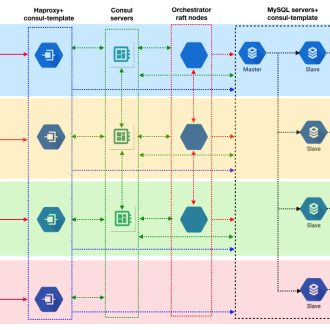
10 Best Articles on MySQL
The most useful articles on MySQL from around the web, curated by thought leaders and our community.
Refind focuses on timeless pieces and updates the list whenever new, must-read articles or videos are discovered.
Top 5 MySQL Articles
At a glance: these are the articles that have been most read, shared, and saved on MySQL by Refind users in 2024 so far.
Short Articles
Short on time? Check out these useful short articles on MySQL—all under 10 minutes.
The best UUID type for a database Primary Key
Learn what UUID type works best for a database Primary Key column and why a time-sorted TSID is more effective than the standard UUID.
Migrating Facebook to MySQL 8.0
We are sharing how we tackled the migration to MySQL 8.0 — and some of the surprises we had in the process.
Scaling to 100M: MySQL is a Better NoSQL
When considering a NoSQL use case, such as key/value storage, MySQL makes more sense in terms of performance, ease of use, and stability.
Highly Available MySQL Clusters at WePay
This post describes WePay's highly available MySQL architecture, and how we achieve short outage times during failures.
Open-sourcing Pinterest MySQL management tools
In the past, we’ve shared why you should love MySQL and how it helped Pinterest scale via sharding. At Oracle Open World today, we announced that we’re open-sourcing the vast majority of our automation that maintains our MySQL infrastructure.
Long Articles
These are some of the most-read long-form articles on MySQL.
MySQL High Availability at GitHub
GitHub uses MySQL as its main datastore for all things non-git, and its availability is critical to GitHub’s operation. The site itself, GitHub’s API, authentication and more, all require database access. We run multiple MySQL clusters serving our different services and tasks. Our clusters use classic master-replicas setup, where a single node in a cluster (the master) is able to accept writes. The rest of the cluster nodes (the replicas) asynchronously replay changes from the master and serve o
On Uber's Choice of Databases
Uber provides bad advice about PostreSQL vs. MySQL
Why Uber Engineering Switched from Postgres to MySQL
Uber Engineering explains the technical reasoning behind its switch in database technologies, from Postgres to MySQL.
The Ultimate Postgres vs MySQL Blog Post
I should probably say up front that I love working with Postgres and could die ...
Designing Schemaless, Uber Engineering's Scalable Datastore Using MySQL
The making of Schemaless, Uber Engineering’s custom designed datastore using MySQL, which has allowed us to scale from 2014 to beyond.
What is Refind?
Every day Refind picks the most relevant links from around the web for you. Picking only a handful of links means focusing on what’s relevant and useful.
How does Refind curate?
It’s a mix of human and algorithmic curation, following a number of steps:
- We monitor 10k+ sources and 1k+ thought leaders on hundreds of topics—publications, blogs, news sites, newsletters, Substack, Medium, Twitter, etc.
- In addition, our users save links from around the web using our Save buttons and our extensions.
- Our algorithm processes 100k+ new links every day and uses external signals to find the most relevant ones, focusing on timeless pieces.
- Our community of active users gets the most relevant links every day, tailored to their interests. They provide feedback via implicit and explicit signals: open, read, listen, share, mark as read, read later, «More/less like this», etc.
- Our algorithm uses these internal signals to refine the selection.
- In addition, we have expert curators who manually curate niche topics.
The result: lists of the best and most useful articles on hundreds of topics.
How does Refind detect «timeless» pieces?
We focus on pieces with long shelf-lives—not news. We determine «timelessness» via a number of metrics, for example, the consumption pattern of links over time.
How many sources does Refind monitor?
We monitor 10k+ content sources on hundreds of topics—publications, blogs, news sites, newsletters, Substack, Medium, Twitter, etc.
Can I submit a link?
Indirectly, by using Refind and saving links from outside (e.g., via our extensions).
How can I report a problem?
When you’re logged-in, you can flag any link via the «More» (...) menu. You can also report problems via email to hello@refind.com
Who uses Refind?
450k+ smart people start their day with Refind. To learn something new. To get inspired. To move forward. Our apps have a 4.9/5 rating.
Is Refind free?
Yes, it’s free!
How can I sign up?
Head over to our homepage and sign up by email or with your Twitter or Google account.
Keep Learning
Get the big picture on your favorite topics.









